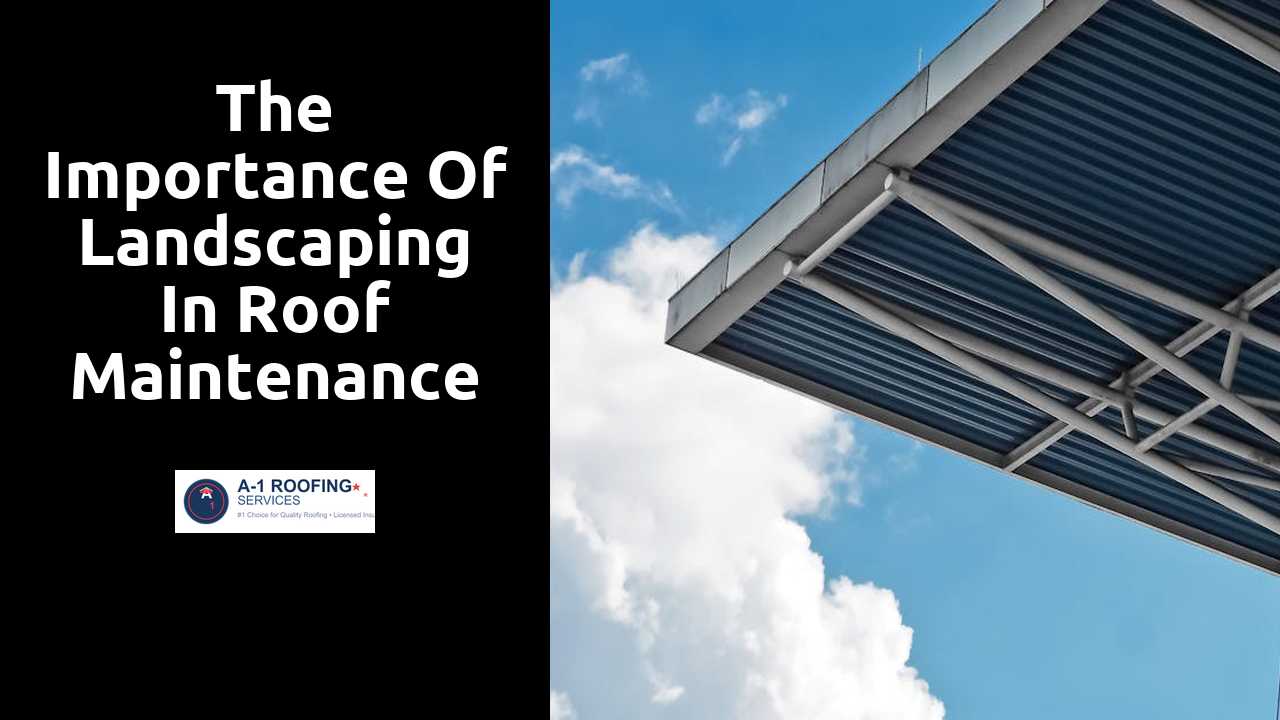
The Importance of Landscaping in Roof Maintenance
Table Of Contents
Minimizing Pest Infestation
Effective landscaping plays a pivotal role in keeping pests at bay. Carefully chosen plants and layouts can create barriers that discourage unwanted visitors like rodents and insects from getting too close to the home. For instance, avoiding dense shrubbery near the foundation limits hiding spots for pests. Additionally, maintaining proper clearance between garden beds and the house helps prevent creatures from making their way onto roofs.
Incorporating natural pest deterrents into landscaping can further minimize infestations. Certain plant species, such as lavender and marigolds, are known to repel insects while enhancing the aesthetic appeal of the property. Keeping vegetation properly trimmed and the lawn mowed not only contributes to a tidy appearance but also reduces the likelihood of attracting pests. This proactive approach to landscaping ultimately protects the integrity of the roof and home.
Have a peek at this blog for further readings.
How Landscaping Can Deter Unwanted Guests
A well-thought-out landscaping design can significantly reduce the likelihood of pest infestations around a property. By selecting specific plants and strategically placing them, homeowners can create an environment that is less inviting to unwanted guests. For instance, fragrant herbs like lavender or mint can deter insects, while barriers of thorny bushes may keep larger pests at bay. Covering soil with gravel or mulch can prevent easy access for ants and other ground-dwelling creatures, making the area less hospitable.
Moreover, the use of native plants contributes to effective pest control through natural means. These plants often attract beneficial insects that prey on harmful species. By promoting biodiversity in the garden, the balance of the ecosystem can be maintained. This creates a landscape that not only enhances aesthetic appeal but minimizes the chances of pest problems, ultimately protecting the integrity of the roof and home. Proper landscaping choices can serve as a first line of defense against infestations and enhance the overall health of the property.
Enhancing Property Value
An attractive landscape significantly boosts the overall appeal of a property. Well-maintained gardens, vibrant flower beds, and neatly trimmed shrubs create a welcoming environment. These visual enhancements not only draw attention but also improve the first impressions potential buyers have when viewing the property. Buyers often perceive homes with quality landscaping as more desirable, translating into higher offers.
Investing in landscaping can lead to a substantial return on investment. Properties with thoughtful and professional landscaping typically command higher market values. Studies indicate that well-designed landscapes can increase a home's value by up to 10 to 15 percent, making it a smart choice for homeowners looking to boost resale potential. The investment in greenery and outdoor aesthetics often pays off in both immediate enjoyment and long-term financial benefits.
The Economic Benefits of Well-Planned Landscaping
Well-planned landscaping can have a significant impact on property value. A thoughtfully designed outdoor space enhances curb appeal, making a strong first impression on potential buyers or guests. Properties with attractive landscapes often command higher sale prices compared to those with minimal or neglected outdoor areas. Well-maintained gardens, trees, and shrubs create a welcoming environment, suggesting that the property has been cared for over time.
Additionally, landscaping can lead to cost savings in various areas. Strategic planting can reduce energy costs by providing shade and insulation to buildings, decreasing reliance on air conditioning. Moreover, native plants typically require less water and maintenance, which can lower landscaping expenses in the long run. Overall, investing in quality landscaping not only beautifies the property but also offers financial returns through increased value and reduced operational costs.
Providing Shade and Protection
Proper landscaping around a home can create a shield against the harsh effects of sunlight and weather. Strategically placed trees and shrubs provide vital shade, which reduces the temperature of the roofing material. Cooler roofs can prevent the premature aging of roofing materials. This shade acts as a barrier, alleviating stress caused by intense heat and UV radiation.
In addition to shade, landscaping elements play a significant role in protecting roofs from falling debris, such as branches and leaves. This natural buffer can help minimize wear and tear on roofing materials and reduce the frequency of maintenance required. Investing in thoughtful landscaping not only enhances the home’s aesthetic appeal but also contributes to the longevity of the roof itself.
The Importance of Tree Placement Around Roofs
Strategically positioning trees around a roof can provide essential protection from the elements. Deciduous trees, for example, cast shade during the summer, which can help in cooling the roof surface and reducing energy costs. Their canopy can also shield the roof from harsh direct sunlight, thereby minimizing wear and tear over time. Additionally, trees can act as windbreaks, mitigating the impact of strong winds that can lead to roof damage.
Careful consideration of tree species and placement is crucial to avoid potential issues. For instance, trees with extensive root systems can compromise the structural integrity of roofing materials if planted too close. Overhanging branches can drop leaves, seeds, and twigs, leading to clogged gutters and increased maintenance. A well-thought-out landscaping plan ensures positive interactions between trees and roofs while minimizing risks, ultimately enhancing the longevity of roofing systems.
Related Links
Safeguarding Your Roof Against Weather-Related DamageEssential Preventative Maintenance Practices for Roof Longevity